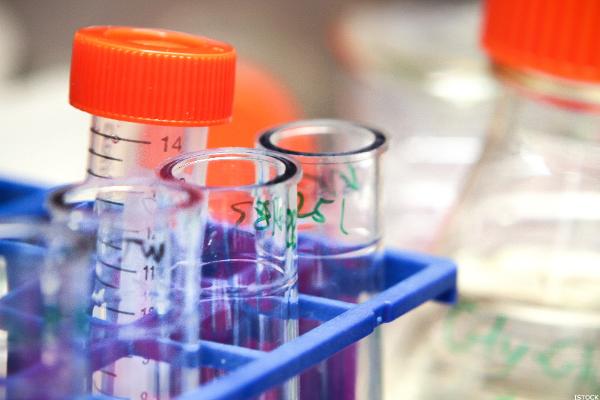
Here’s a look at why markets have responded in this way to the news and what to look out for next from the company as indicative of further strength heading into the end of 2017 and beyond.
First then, for anyone not familiar with this one, Citius is a small cap biotechnology company that’s working to develop a pretty diverse pipeline of drug products and therapeutics. With that said, the vast majority of valuation for this company right now is rooted in the potential of one asset in particular – what’s called the Mino-Lok device.
In order to understand what this device is and where it fits into the biotechnology landscape, it’s first important to understand a little bit about what are called Central Venous Catheters (CVCs). These are devices used to deliver medium to long-term doses of certain drugs. Physicians employ them in a wide variety of indications but the most common (and easiest to use as an example for the purposes of this discussion) population is cancer patients.
The CVC is hooked up to the heart through (generally) the subclavian vein and can be attached to an IV drip directly, so as to allow for easy and direct systemic administration of chemotherapy agents.
This is a solid approach and it’s one that’s worked well for a long time from an efficacy perspective but there is a major problem on the safety side of things – what are called catheter-related bloodstream infections (CRBSIs). As the name illustrated pretty clearly, these are bloodstream infections and they can be very serious, especially in cancer patients where the immune system of the person receiving treatment is already compromised because of the radio and chemotherapy.
Of the approximately 7 million CVCs used annually in the US, about 500,000 or 7% become infected leading to serious, life-threatening infections.
Under the current standard of care regimen, when a patient gets a CRBSI, physicians remove the catheter and replace it with a fresh one. However, these procedures are costly and 15% to 20% of the procedures are associated with significant morbidity.
And this is where Citius and Mino-Lok come into the picture.
Mino-Lok is a device/therapy that is designed to be administered for two of the 22 hours out of each day in place of the standard IV medication in patients with a CVC. It’s a minocycline, edetate (disodium EDTA), and ethyl alcohol, all of which act at the same time to break down bacterial biofilms, eradicate the bacteria that causes (or has already caused) the infection and, in turn, salvage the indwelling catheter.
The importance of this system, then, is that Mino-Lok might be able to completely eradicate the issues associated with CRBSIs.
So why is this news now?
As mentioned above, the company just put out data from an international study conducted in Brazil, Lebanon, and Japan. The study included 44 patients designed to assess whether the Mino-Lok system is an effective intervention to salvage long-term, infected CVCs in catheter-related bloodstream infections in patients who had cancer with limited vascular access.
As per the poster presented at the ID Week Conference in San Diego, California, and also recently presented at the IDSA (Infectious Disease Society of America) meeting, the study showed 95% effectiveness for Mino-Lok therapy in achieving microbiological eradication of the CVCs as compared to 83% for the control.
This reflects data already collected as part of a similar, phase II study that the company conducted in the US and serves to reinforce the asset’s approval push as and when it goes up for review in front of the FDA.
So what’s next?
Citius recently sat down with the FDA in the US to discuss the outcome of the just mentioned phase II study and to put together a protocol for a phase III, pivotal investigation. As announced alongside the just reported presentation data, Citius is in the process of initiating said phase III right now.
The protocol for the trial in question is available here. Outlined at that link is an initiation date of September 2017 with a primary completion date of June 2018 and a study completion date of September 2018. Citius has missed its mark by a month or so on initiation, meaning we’re probably looking at August next year as a primary completion target followed by study completion during the final quarter of the year.
This one is a 700 patient study and, if it wraps up successfully, it has the potential to support a strong NDA for this asset in the US, setting up a potential approval date during the third quarter of 2019.
As with the phase II, the primary endpoint is rooted in the proportion of subjects deemed successfully treated at the end of the study period, with success is defined as any subject who demonstrates eradication of the pathogen, stabilization or improvement in signs and symptoms of the infection, catheter salvage, AND survival at termination of the study.




